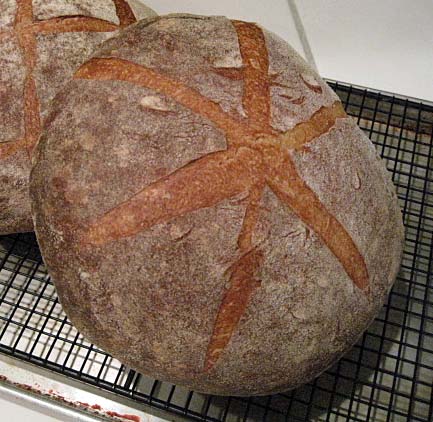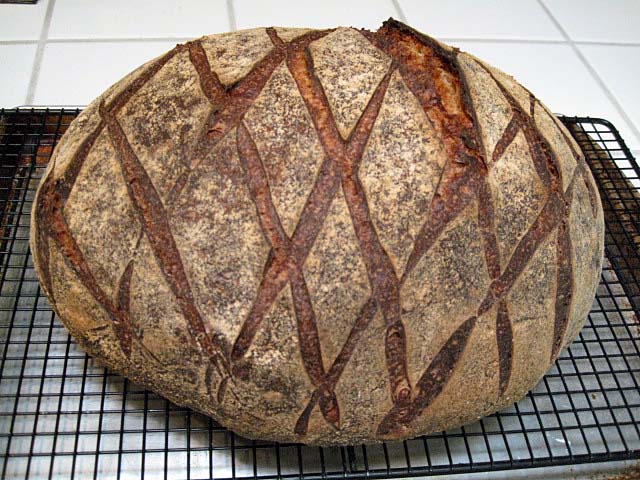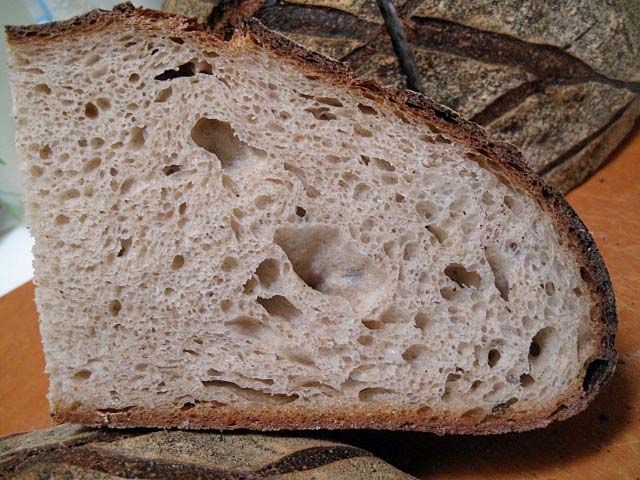dmsnyder's blog
Double knotted rolls from "Inside the Jewish Bakery"

Three years ago, I made Double Knotted Rolls from a formula provided by nbicomputers, AKA Norm Berg, AKA co-author with Stan Ginsburg of Inside the Jewish Bakery. (See: Norm's Double Knotted Rolls) We enjoyed these rolls a lot, especially for sandwiches made with leftover Thanksgiving turkey.
A pair of pairs of Hamelman's Pains au Levain

I finally got around to making Hamelman's "Pain au Levain with Whole Wheat Flour." For comparison, I also baked his Pain au Levain. The former was cold retarded overnight. The latter was not. However, I did retard the firm sourdough starter used for both breads overnight, and I believe this resulted in a tangier pain au levain than my previous bakes.
On to some photos:
80% Sourdough Rye with Rye-flour Soaker from Hamelman's "Bread"

It has been almost a year since I first made the “80% Sourdough Rye with Rye-Flour Soaker” from Hamelman's Bread. At the time, I said it was my new favorite high-percentage rye bread, and I can't say its status has changed. Actually, it's been a while since I have made a high-percentage rye bread. I've been thinking about it, but Codruta's lovely bake of this bread finally inspired me sufficiently to do it.
Pizza Napoletana - Maggie Glezer's dough with modifications
Three months ago, I made pizzas using Maggie Glezer's recipe for the dough. (See Pizza Napoletana) It made the best thin, crisp pizza I'd ever had. My blog on that pizza elicited many useful comments and suggestions. I incorporated some of them into the pizza I made this weekend. Thanks to Ross for the prompt to make sourdough pizza dough and to Sylvia for the mention of using a combination of bread flour and durum flour in the dough.
This weekend's baking: Tartine Basic Country Bread & Maggie Glezer's Sourdough Challah as a pan loaf
The Basic Country Bread from Tartine Bread is among my favorites, but I haven't baked it in a while. After my positive experience with Central Milling's "Organic Fine Whole Wheat" flour used to make the whole wheat bread from BBA, I wanted to try it in the Tartine BCB. In summary, it was wonderful.








